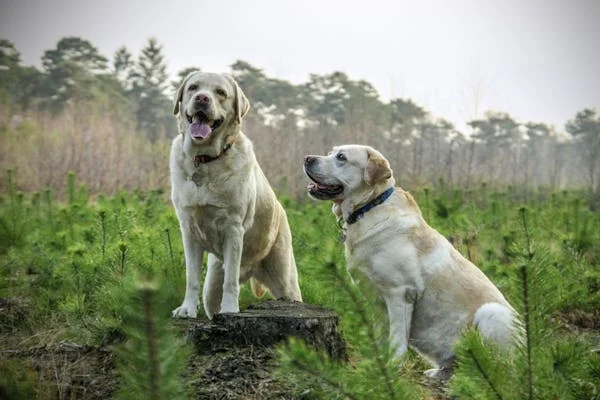Introduction
175 Dogs Rescue from Hoarders in Mississippi 2011, became the site of one of the most significant animal rescue operations in the state’s history. Authorities and animal welfare organizations rescued 175 dogs from a harrowing hoarding situation, shedding light on the severe consequences of animal hoarding and the critical role of community intervention in animal welfare.
The Initial Discovery
Community Concerns and Alert
- Neighbors reported persistent barking and foul odors.
- Sightings of numerous dogs roaming the property raised suspicions.
- Authorities were alerted to investigate the situation.
Shortly after the reports, animal control officers arrived at the scene. The initial findings confirmed the neighbors’ worst fears. Dogs of various breeds and sizes were crammed into small, unsanitary spaces. The sheer number of animals overwhelmed the property, making it evident that the situation had spiraled out of control.
Signs of Hoarding
- Dogs were found in cramped spaces.
- There was a lack of clean water, food, and fresh air.
- The property was covered in waste, creating a hazardous environment.
The conditions were dire, with many dogs showing visible signs of neglect. Their coats were matted, and the smell of urine and feces permeated the air. The discovery painted a grim picture of the realities of animal hoarding.
The Rescue Operation
Planning the Rescue
- Coordination between animal control, law enforcement, and welfare organizations.
- Development of a strategy to ensure the safety of animals and rescuers.
Rescuing such a large number of animals required meticulous planning. Authorities worked closely with local animal welfare groups to devise a step-by-step approach that prioritized the well-being of the dogs. Each organization brought its expertise to the table, creating a cohesive rescue strategy.
Execution of the Rescue
- Gradual removal of dogs to minimize stress.
- On-site medical evaluations for immediate care.
The rescue operation spanned several days, with teams working tirelessly to transport the dogs to safety.
Challenges Faced
- Transporting a large number of animals.
- Providing immediate medical care and shelter.
- Community volunteers played a crucial role in overcoming these challenges.
Despite thorough planning, the rescue team faced numerous obstacles. The sheer volume of dogs meant that resources were stretched thin. However, the support from local volunteers and donations helped bridge the gap, ensuring that every dog received the care they needed.
Health and Rehabilitation Process
Medical Interventions
- Common issues included malnutrition and infections.
- Immediate treatment involved balanced diets and antibiotics.
Behavioral Rehabilitation
- Many dogs exhibited signs of trauma.
- Gradual socialization and trust-building exercises were necessary.
The psychological toll on the dogs was evident. Many displayed signs of fear and anxiety, a direct result of their traumatic experiences. Animal behaviorists were called in to develop individualized rehabilitation plans to help the dogs adjust to their new environments.
Overview of Health Issues and Treatments
|
Health Issue |
Symptoms Observed |
Treatment Provided |
|
Malnutrition |
Weakness, weight loss |
Balanced diet, vitamin supplements |
|
Skin Infections |
Redness, sores, hair loss |
Antibiotics, medicated baths |
|
Parasite Infestation |
Itching, anemia |
Deworming, flea treatments |
|
Psychological Trauma |
Aggression, fearfulness |
Behavioral therapy, gradual socialization |
Adoption and Rehoming Efforts
Finding Forever Homes
- Dogs were placed in shelters and foster homes.
- Adoption events were organized to find permanent homes.
The road to recovery didn’t end with rescue. Efforts were made to find loving homes for each dog. Adoption drives became a regular event, drawing in potential adopters eager to offer these dogs a fresh start.
Adoption Process
- Potential adopters underwent screening processes.
- Home visits and follow-ups were conducted to ensure suitability.
Success Stories
- Many dogs found loving families.
- Recovery stories were shared to inspire community support.
The success stories that emerged from this tragic event were heartwarming. Dogs that were once fearful and sickly transformed into healthy, happy pets. These stories were shared widely, inspiring further community support and advocacy for animal welfare.
Addressing Animal Hoarding: Legal and Ethical Perspectives
Legal Actions Taken
- The property owner faced animal cruelty charges.
- The case spurred discussions on stronger animal welfare laws.
Ethical Considerations
- Animal hoarding often links to mental health issues.
- A compassionate approach combining legal and mental health support is necessary.
Animal hoarding is often a symptom of deeper psychological issues. Understanding this, authorities and welfare organizations advocated for a dual approach that combined legal action with mental health support to prevent recurrence.
Community’s Role in Animal Welfare
Importance of Reporting
- Community vigilance can prevent prolonged animal suffering.
- Early reporting of suspicious activities is crucial.
The Slidell case underscored the importance of community involvement in animal welfare. Without the neighbors’ timely reports, the suffering of these dogs could have continued unnoticed.
Volunteer Involvement
- Volunteers provided on-ground support.
- Foster families offered temporary homes for the rescued dogs.
Volunteers became the backbone of the rescue operation, offering their time and resources to ensure the dogs’ safety and recovery. Their involvement highlighted the critical role that community members play in such crises.
Preventing Future Hoarding Cases
Education and Awareness
- Public campaigns educate on the signs of hoarding.
- Responsible pet ownership is promoted to prevent future cases.
Prevention is always better than cure. Public education campaigns were launched to inform the community about the signs of animal hoarding and the importance of responsible pet ownership.
Support Systems
- Establishing mental health resources for potential hoarders.
- Community networks to provide support and intervention.
Providing support systems for individuals at risk of becoming hoarders is vital. By addressing the root causes, such as mental health issues, communities can prevent the emergence of similar situations.
Key Players in the Rescue Operation
|
Role |
Organization |
Contribution |
|
Local Authorities |
Slidell Police Department |
Initial investigation and legal actions |
|
Animal Control Officers |
St. Tammany Parish Animal Services |
Safe removal and temporary care of the dogs |
|
Humane Society |
Humane Society of Louisiana |
Coordinating rescue efforts and medical care |
|
Volunteers |
Local Community Members and Volunteers |
On-ground support and fostering rescued dogs |
The Long-Term Impact
Changes in Animal Welfare Policies
- Introduction of stricter animal welfare laws.
- Enhanced monitoring systems for early detection of hoarding cases.
The rescue operation had lasting effects on local animal welfare policies. New laws were enacted to provide better protection for animals, and monitoring systems were improved to catch signs of hoarding early.
Community Awareness
- Increased community involvement in animal welfare.
- Education on the importance of timely intervention in animal neglect cases.
The community’s response to the Slidell case set a precedent for future involvement in animal welfare. Increased awareness and proactive measures became a new norm, ensuring that animals received the protection they deserved.
Conclusion
175 Dogs Rescue from Hoarders in Mississippi 2011, underscores the critical need for vigilance, community involvement, and robust legal frameworks to prevent animal cruelty. This case serves as a powerful reminder of the impact of collective efforts in safeguarding animal welfare and the importance of addressing the root causes of animal hoarding.
FAQs About 175 Dogs Rescue from Hoarders in Mississippi 2011
What is animal hoarding?
Animal hoarding involves keeping a large number of animals in inadequate conditions, leading to neglect and suffering. It often stems from underlying psychological issues.
How can the community help prevent animal hoarding?
Communities can help by staying vigilant, reporting suspected cases to authorities, and supporting local animal welfare organizations.
What were the main challenges in the Slidell rescue operation?
The main challenges included transporting a large number of dogs, providing immediate medical care, and finding temporary and permanent homes for the animals.
What legal actions were taken against the property owner in Slidell?
The property owner faced multiple charges of animal cruelty, which sparked discussions about stronger animal welfare laws.
How can individuals help rehabilitate rescued animals?
Individuals can volunteer at shelters, foster rescued animals, and adopt pets, providing them with the care and socialization they need to recover.
What steps are involved in adopting a rescued animal?
The adoption process typically involves an application, screening, home visits, and follow-ups to ensure the adopter is suitable and the animal is in a safe environment.




